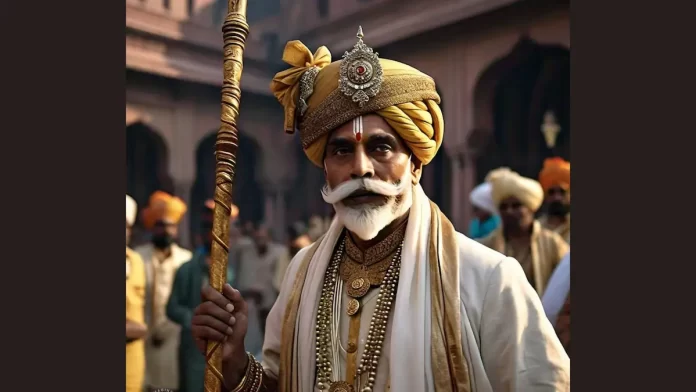During the medieval period, Indian society was marked by a complex hierarchy of power and social relations, where the influence of Hindu upper castes, particularly the Brahmana-Rajput combine, remained significant even under Muslim rule.
The Mughal Empire, which established itself in India in the early 16th century, brought about many changes in administration, culture, and architecture, but it did not drastically alter the entrenched social structures that had long been dominated by Hindu upper castes.
The Pyramid of Social Relations
Abu’l Fazl, a prominent court historian of the Mughal Emperor Akbar, provides valuable insights into the social hierarchy of the time. His accounts suggest that the zamindars, or local landholders, formed the narrow apex of the rural social pyramid.
These zamindars were often from the upper castes, particularly Brahmins and Rajputs, who had established firm control over rural society.
This upper-caste dominance was not only a continuation of pre-Mughal social structures but was also reinforced during Mughal rule through various means, including administrative policies and alliances.
The Influence of Upper-Caste Zamindars
The zamindars played a crucial role in the rural economy and society. They were responsible for collecting land revenue, maintaining law and order, and managing agricultural production.
Their power and influence often extended beyond mere economic control; they were also seen as local leaders and patrons of culture and religion. This position allowed them to exert significant control over the daily lives of the rural populace.
The presence of Muslim zamindars was relatively limited and often part of a broader strategy by the Mughal rulers to integrate diverse elements into their administration. However, the overall control and influence remained largely with the Hindu upper castes.
Intermediate castes and a few Muslim zamindars also held land, but their representation was not as significant compared to the entrenched power of the Brahmana-Rajput combine.
Limited Control of Muslim Sovereigns
Muslim sovereigns, including the Mughals, primarily focused on the broader aspects of governance, such as administration, military campaigns, and revenue collection.
The intricate details of rural administration and day-to-day life were largely left to local zamindars and village headmen. This decentralization meant that while the Mughals exercised overarching control, the actual management of rural life was in the hands of local leaders, predominantly from the Hindu upper castes.
Historical records and scholarly analyses indicate that Muslim rulers often faced resistance when they attempted to intervene directly in local affairs.
For instance, any attempts by the central authorities to impose their will on local customs or land rights were met with opposition from powerful zamindars.
These revolts and acts of defiance were particularly notable among Hindu upper caste zamindars who were protective of their traditional privileges and authority.
Rural Sufferings and Exploitation
The rural populace in medieval India faced various forms of exploitation and oppression, but these were primarily driven by the local power structures.
The zamindars, as local revenue collectors, often imposed heavy taxes and extracted dues, leading to significant hardship for the peasantry. While the Mughal administration set the overarching revenue demands, the implementation and collection were the responsibilities of the zamindars.
The exploitation and oppression faced by the rural masses were thus more a reflection of the local power dynamics than the direct actions of the Muslim sovereigns. The entrenched caste hierarchy, with its rigid social divisions and economic exploitation, was a significant factor in the rural sufferings of medieval India.
Conclusion
The social and economic control of medieval Indian society remained largely in the hands of the Hindu upper castes, particularly the Brahmana-Rajput combine, even during periods of Muslim rule. The Mughal Empire, while influential in many aspects of Indian life, did not drastically alter the local power structures that had long been dominated by these upper castes.
The day-to-day lives of common Indians, especially in rural areas, were governed more by the local zamindars and village headmen than by the central Muslim authorities.
This local control often resulted in exploitation and oppression that were rooted in the pre-existing social hierarchies rather than the policies of the Muslim rulers.
Sources-
- Themes in Indian History, NCERT Delhi
- Satish Chandra Medieval India
